From Kirkus Reviews
A
resourcefully imaginative examination of our desperate search for an
explanation of ultimate evil. In the vast literature on Hitler and the
Holocaust, one question recurs again and again: Why? If the ``how'' (the
mechanics and bureaucracy) of the ``final solution'' has been detailed,
then the vexatious ``why'' still haunts the worlds collective
conscience. Rosenbaum (Travels with Dr. Death, 1991; Manhattan Passions,
1987), a New York Observer cultural affairs columnist, brings a
journalist's vigorous, querying temperament to a topic that all too
often drowns in opaque pedantic moralizing. Rosenbaum has read
extensively and thoughtfully; he also casts a wide intellectual net,
writing chapters on the interpretive musings of H.R. Trevor-Roper, Alan
Bullock, Yehuda Bauer, the philosopher Berel Lang, literary critic
George Steiner, filmmaker Claude Lanzmann, and even the Hitler apologist
and revisionist David Irving. (Conspicuously and curiously absent is
Primo Levi, whose work The Drowned and the Saved is a classic in the
field.) Potentially explosive subjects--for example, Hitler's reportedly
``abnormal'' sexuality--are handled with discerning intelligence.
Rosenbaum employs a brilliant methodological stratagem by taking Albert
Schweitzer's 1906 study, The Quest for the Historical Jesus, as a model.
Schweitzer realized that the 19th-century school of German Protestant
``higher criticism,'' which prided itself on its ``scientific''
positivism in explaining Jesus, actually revealed more about scholars
themselves than the historical figure they were studying. Similarly,
Rosenbaum shows how the various attempts to ``explain'' Hitler are
prisms that reflect our own fears and desires. This leads, of course, to
the not insignificant matter of Rosenbaum's own fears and desires,
ironically not fully addressed by the author. Yet his great contribution
is that, unlike most Holocaust scholars, he refuses to offer a
definitive explanation. Instead, he lays out with memorable clarity a
series of tantalizing interpretations, preferring a ``poetry of doubt''
that allows us to grapple for ourselves with the question of evil.
Profound and provocative. (Author tour) -- Copyright ©1998, Kirkus Associates, LP. All rights reserved.
Review
A
large part of the book's fascination arises directly from Rosenbaum's
decision to forgo producing yet another conventional Hitler biography in
order to focus on what could be called "the Hitler effect": the widely
divergent, often contradictory accounts we have of him, his motives,
personality, beliefs and even sexuality. -- The Los Angeles Times Sunday Book Review, Michael Andre Bernstein
All in all, Rosenbaum has succeeded in writing a highly important book. As a tour d'horizon of Holocaust scholarship, Explaining Hitler
connects historical inquiry to the deepest issues of free will,
personal responsibility, and evil. Still, for all its intellectual
force, the book also has some curious flaws. For one thing, there are
conspicuous and inexplicable absences. Where in Rosenbaum's book is
Albert Speer, Hitler's architect and minister of armaments? Speer knew
Hitler like few others, and lived to write a remarkable memoir. And
where, too, is the distinguished German historian Joachim Fest? While
such genuinely important material is passed over, Rosenbaum devotes a
great deal of space to the numerous strange myths and rumors that have
arisen about Hitler's psychopathology. But if the facts behind many of
these are rather difficult to pin down, and if all tend to exonerate
Hitler by pointing to one or another form of severe mental illness, what
is the purpose of sorting them out, particularly those that are on
their face utterly preposterous?
It is a measure of Rosenbaum's achievement that, even with this contradiction at its core, Explaining Hitler is a book that glistens with insight and intelligence, and shimmers with originality. -- Commentary, Gabriel Schoenfeld
Unlike many intellectual histories, Explaining Hitler
does not confine itself to simple textual analysis, but showcases
Rosenbaum's reportorial skills with acute, sometimes edgy interviews
with such controversial thinkers as Claude Lanzmann, the creator of the
movie Shoah, George Steiner, the critic and author of the much debated novel The Portage to San Cristobal of A.H.,
and the Hitler apologist David Irving. The resulting book ... is a
lively, provocative work of cultural history that is as compelling as it
is thoughtful, as readable as it is smart. -- New York Times, Michiko Kakutani
While
respectful of most of the Hitler explainers, Rosenbaum appears largely
as a skeptic, gently pointing out to his interviewees where evidence is
thin or their explanations weak. -- The New York Times Book Review, Michael R. Marrus
[I]t
will probably not please all of the more traditional writers of
history, nor will it please readers who find even a touch of
psycho-jargon too much to take. But once one gets over the novelty, and
sometimes the irritation, of reading history in this way, it is
impossible not to admire the depth of Mr. Rosenbaum's knowledge, the
intelligence of the questions he asks and the time he has spent
re-examining all the possible explanations of Hitler's character in
general and his decision to destroy the Jews in particular. -- The Wall Street Journal, Anne Applebaum
Excerpt. © Reprinted by permission. All rights reserved.
CHAPTER 1
The Mysterious Stranger, the Serving Girl, and the Family Romance of the Hitler Explainers
In
which the author makes an expedition to the Hitler family "ancestral
home" and meditates upon the romantic life of Maria Schicklgruber, as
imagined by historical fantasists Iwas ready to give up and turn back. A
surprise mid-autumn snowstorm had blown out of Russia and was
blanketing Central Europe, making the relatively primitive back roads of
this backwoods quarter of Austria increasingly impassable.
We
were only about twenty miles short of our objective, but our rented
Volkswagen was beginning to skid, once bringing us perilously close to
the brink of one of the woody ravines that crisscrossed the otherwise
featureless reaches of snow-covered farmland stretching north to the
Czech border.
I'd timidly suggested to my Austrian researcher,
Waltraud, who was at the wheel, that we ought to consider abandoning our
quest for the day because of the risk. But she wanted to press on,
declaring that, as a native of the mountainous Tyrol, she had experience
navigating the far more treacherous mountain roads of the Alps.
Not
entirely reassured, I nonetheless felt there was something appropriate
about the blizzardy circumstances of this venture: The storm we were
heading into was an autumnal version of the blitz of snow that had
halted Hitler's panzer divisions just short of Moscow in the winter of
1941-the beginning of the end for him. The place we were fighting
through the snow to find-a ghost town called Döllersheim-was the
beginning of the beginning: the primal scene of the mysteries behind the
Hitler family romance.
The disappearance, the apparently
deliberate erasure, of Döllersheim is one of the most peculiar aspects
of the deeply tangled Hitler-genealogy controversy. The tiny village was
literally blasted off the map and out of existence sometime after
Hitler annexed Austria. An effort-some partisans in the controversy
contend-to erase all traces of certain irregular and disreputable Hitler
family events that took place there. Irregularities that have long cast
a shadow over accounts of Hitler's origins. Irregularities that had
given rise to repeated pilgrimages to Döllersheim in the prewar years by
journalists and other interested investigators, news of which
invariably provoked Hitler into near-apoplectic rages.
"People must
not know who I am," he was reported to have ranted when he learned of
one of the early investigations into his family history. "They must not
know where I come from."
And there are those who insist that
after 1938 he made Döllersheim pay the price for being the site of such
inquiries, made it disappear. Whatever the cause of the erasure, there
can be little doubt of its effectiveness. That morning in Vienna, as the
snow began gusting in from the east, I searched in vain for a map that
still had the hamlet of Döllersheim on it, until I happened on a little
shop belonging to a rare-book dealer who was able to dig up a musty 1896
German atlas of the world which still had the hamlet of Döllersheim on
its map of Austria. While the map showed no roads, it did provide a
means of triangulation: The dot on the map for Döllersheim was just
north of a bend in the river Kamp and just east of another little dot on
the map called Ottenstein.
Ottenstein: That name conjured up a
peculiarly memorable phrase, "scion of the seigneurial house of
Ottenstein." This Heathcliffian heroic epithet appears in a catalog of
candidates-list of suspects, one might say-for the shadowy figure at the
heart of the Hitler family romance: the man who fathered Hitler's
father. The identity of the man who impregnated a forty-two-year-old
unmarried serving woman named Maria Schicklgruber sometime in late 1836
was not disclosed on the baby's baptismal certificate filed in her
parish church in Döllersheim when the child (christened Alois
Schicklgruber) was born on June 7, 1837. That blank line on the
baptismal certificate, in the space where the name of the father of the
child should be, has become a kind of blank screen onto which
journalists, intelligence agencies, historians, psychoanalysts, and
other fantasists have projected a wild array of alternative candidates
to the man named in the official Nazi genealogies as Hitler's paternal
grandfather, Johann Georg Hiedler.
Hundreds and hundreds of pages
in scores of books have been devoted to trying to divine the sexual
choice behind that blank line, to read the mind of the woman who made
the choice: Maria Schicklgruber. She was, in fact, the first of three
generations of Hitler-related women whose unfathomable erotic liaisons
cast a powerful spell over Hitler's life-and over his subsequent
biographers. After Maria, there was Hitler's mother, Klara, and then his
half-niece Geli Raubal. Three women-all, interestingly, serving
girls-whose greatest service has been to the Hitler explainers.
The
flavor of the speculation over Maria Schicklgruber's sexual choices is
captured by the partial catalog of candidates for the role of Hitler's
paternal grandfather offered by the impressionable German biographer of
Hitler, Werner Maser.
"Various candidates have been suggested,"
Maser writes. In addition to the official nominee on the Nazi Party
family tree for Hitler, Johann Georg Hiedler, and Maser's own candidate,
Johann Georg's wealthier brother Johann Nepomuk Hiedler, there are "a
'Graz Jew' by the name of Frankenberger, a scion of the seigneurial
house of Ottenstein, and even a Baron Rothschild of Vienna." Maser
doesn't believe Adolf Hitler was a Frankenberger, an Ottenstein, or a
Rothschild descendant (the latter astonishing suggestion seems to be
traceable to the pre-Anschluss anti-Hitler Austrian secret police). But
he has concocted an elaborate theory of rural sexual intrigue and greed
over a legacy to bolster the candidacy of his man, Johann Nepomuk
Hiedler.
One can argue with Maser's Brueghelian explanation of
the Döllersheim ambiguities, but it's hard to deny his summary of the
confused state of Hitler studies on the paternal-grandfather question:
"If there is one fact on which at least some biographers are agreed, it
is that Adolf's paternal grandfather was not the man officially regarded
as such, namely the journeyman miller Johann Georg Hiedler." (A "fact"
only "some" biographers agree upon is hardly a fact to rely upon.) The
more judicious Alan Bullock says, "In all probability, we shall never
know for certain who Adolf Hitler's grandfather, the father of Alois,
really was. It has been suggested that he may have been a Jew, without
definite proof one way or the other."
The closer we got to our
destination, to Döllersheim, the more empty and remote from civilization
the countryside began to look, the further back in time we seemed to be
going. This part of Austria, the Waldviertel (the sector northwest of
Vienna, between the Danube and the Czech border), and its scattered
peasant-farmer inhabitants have remained relatively isolated from
cosmopolitan civilization for centuries. With the heavy blanketing of
snow shrouding the occasional ancient barn and farmhouse and
obliterating almost all remaining visible traces of modernity, the
lonely look and feel of the countryside could not have differed much
from the way it looked some 156 years earlier. When someone-either a
local-yokel miller or a mysterious stranger with "alien blood"-bedded
down a middle-aged peasant woman named Maria Schicklgruber, leaving her
pregnant with Hitler's father and leaving subsequent historians a legacy
of doubt. Doubt that may have haunted Hitler as well as those who tried
to explain him.
As we pulled into the courtyard of a
three-century-old inn to ask for directions to Döllersheim, the remote
snowbound setting and the nature of our search for Maria Schicklgruber's
shadowy secret lover recalled to me the opening of Mark Twain's
peculiar, posthumously published fable of evil, The Mysterious Stranger:
"It was in 1590-winter. Austria was far away from the world, and
asleep. . . . And our village was in the middle of that sleep. . . . It
drowsed in peace in the deep privacy of a hilly and woodsy solitude . . .
news from the world hardly ever came to disturb its dreams."
Of
course, someone does then come to disturb the dreams of this insulated
Austrian fastness in Twain's tale, "a mysterious stranger" who turns out
to be Satan, although Twain's Satan is both more angelic and more
diabolical than the conventional Prince of Darkness.
I was
surprised when, after I returned home from Döllersheim and reread The
Mysterious Stranger, to find in it the following passage from Twain's
1916 fable: "We had two priests [in the sleepy village]. One of them,
Father Adolf, was a very zealous and strenuous priest. . . . [No one]
was held in more solemn and awful respect. This was because he had
absolutely no fear of the Devil. Father Adolf had actually met Satan
face to face more than once."
It's remarkable how accurately
Twain evoked the drowsing remoteness of this countryside, the sense of
the sinister potential in somber, muffled silence. The little inn we'd
stopped at was built sometime around 1600, one of the men huddled in
front of the fireplace in the dining room told us. And aside from a
poster on the wall announcing a "Disco Abend" next Saturday night at the
local parish hall, it didn't look like much had changed in the
centuries since. We ordered some wursts and asked the locals if they
could help us find Döllersheim. It was they who gave us our first
intimation of the nature of the verfallen world we were heading into.
The
verfallen world, the ruined wasteland that was once Hitler's "ancestral
homeland": It is the ur-source of Hitler's strangeness, the original
locus of his alienness, his foreignness, an uncertainty of origins that
was more than geographical. Throughout his life, wherever he we...





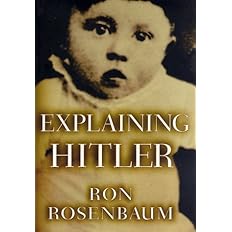
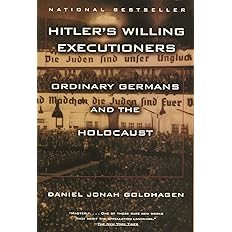
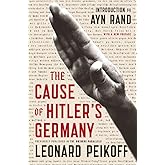




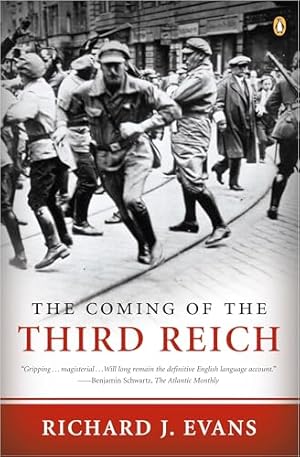




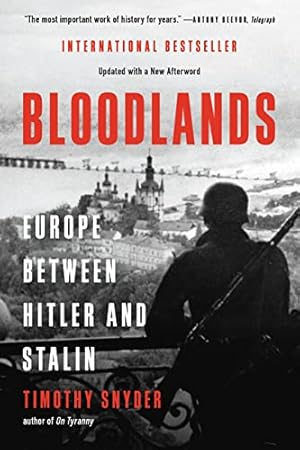

























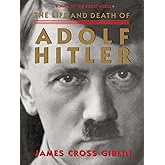
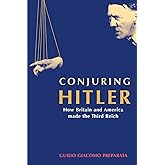

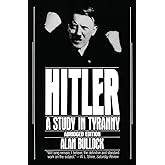
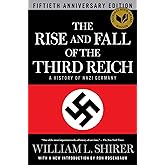
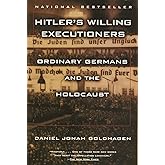









Comments
Post a Comment